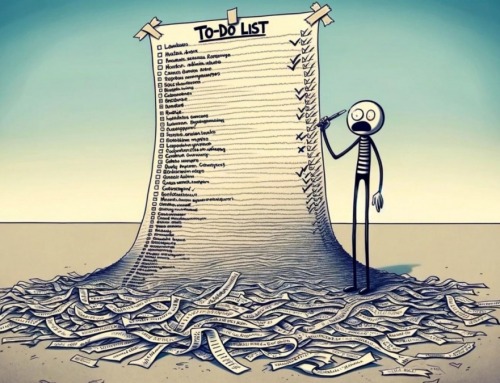The Dangers of Taking “Simple” for Granted
These days, many cloud-based CRM software applications are pretty simple to use. In fact, many software vendors have done such a good job of touting the simplicity of their applications, with terms like “ease of use” and “user friendly”, that some of their customers take implementing and using their CRM system for granted.
Unfortunately, just because something is simple does not mean that you can afford to neglect it and take it for granted. Although it may be easy to use, if you don’t learn to implement the best practices, this will almost inevitably lead to a failure to get the maximum benefits from your CRM system. To illustrate this, consider the example of brushing your teeth. The task is relatively simple, but if you use the wrong techniques or neglect brushing your teeth altogether, this can lead to cavities, gingivitis, tooth loss, or even heart disease.
Similarly, using your CRM system inefficiently or ineffectively, or not using it consistently, can cause negative consequences for your business. You may fail to capture important customer data or insights, fail to follow-up on scheduled tasks or appointments, or otherwise mismanage customer relationships and potentially lose new business or current customers.
These problems can be avoided with a proper implementation by successfully getting user adoption and by instituting and reinforcing best practices.
How to Encourage User Adoption and Best Practices
1. Choose the Right Internal Administrator. Avoiding some of the pitfalls in your CRM software implementation starts with choosing a good internal administrator. As the lead system administrator, trainer, coach, and connection between your business and your CRM software, your internal administrator is critical in ensuring a successful implementation. Ideally, you want to choose someone who is a quick learner, who understands your business processes and workflow, and has proven project management and leadership capabilities. And, of course, you need someone with good software skills and the time needed to handle the responsibilities of being a CRM administrator. For more on this important first step in your implementation, see our related blog post, “How to Choose a Good CRM Administrator”.
2. Set Progressive Goals. Most CRM software solutions (PlanPlusOnline.com included) have far more features than an average user may ever need. Even for the features that you intend to use, some may be more important than others, and it may not be realistic for your organization to tackle them all at once. This is why it is usually best to take a progressive approach, start with the fundamentals and highest priorities, and build from there through training and reinforcement to cultivate the user adoption and system usage that you need to achieve.
Your CRM administrator should work together with your stakeholders and your other team members to determine and prioritize the long-term objectives of your implementation, set attainable and practical short-term goals for user adoption and best practices, and develop a system for measuring and reviewing progress and for setting future goals for maximizing your CRM investment.
Our two-part blog series on Progressive Goal Planning™ and Applications of Progressive Goal Planning offers helpful guidelines on how to apply a progressive approach to setting and achieving goals for any endeavor or project you undertake.
3. Build on Successes with Early Adopters. If you are involved in developing or producing any kind of product, you have probably seen the bell curve model representing the traditional product life cycle. In many ways, your CRM adoption will follow a similar pattern: Innovators, Early Adopters, Early Majority, Late Majority, and Laggards.
Your innovators will probably be those who made the decision that a new or upgraded CRM system was needed. This might even include the role of the administrator setting up the system and preparing the initial use cases. At the point that the system is ready for wider use across your company, you are in need of some early adopters.
The early adopters are often the users who are willing to take your word for it that the CRM software will “make them more productive”. Because you don’t have any other successes yet, you need people who either trust you or have a reason to try something new. New employees are usually easy picks for this role because their experience with your previous methods or system may be limited, so they may have minimal resistance to new alternatives. But be careful: they may not have earned the trust and credibility of your other team members, so their influence on others may also be limited.
Look for someone who is a rising star in the organization who has had some successes and seems hungry to contribute to the success of the organization as well as improve his or her own stature. Successful early adopters may find themselves in a leadership role in the implementation as it begins to increase in scope. The right early adopters will find this an opportunity to show off their leadership talents and will jump on board. The wrong people will view this as an extra burden being placed on them. You want to avoid resistant individuals in the initial stages as they will do more to hurt your efforts than help it.
4. Be Realistic. In some situations, it may not be realistic to expect 100% user adoption and use of best practices, even after a full implementation and ongoing efforts. If you have a small team of employees, you may be able to achieve 100% adoption and compliance. However, if you are working with a large company or one with outside sales people and/or independent contractors, you might only be able to achieve 70-80% user adoption and compliance.
Consider size of your company, the characteristics of your team members, and the challenges you may face when making a realistic assessment of your prospects. Even if you conclude that your organization could potentially achieve 90-100% success, remember that it may take time and a concerted effort to reach that level. You may need to develop a plan for ongoing training, review, and goal management to get you there. But, by following these guidelines and taking the right steps, you can have a successful implementation and put the simplicity of your CRM software to the best use for your business.






